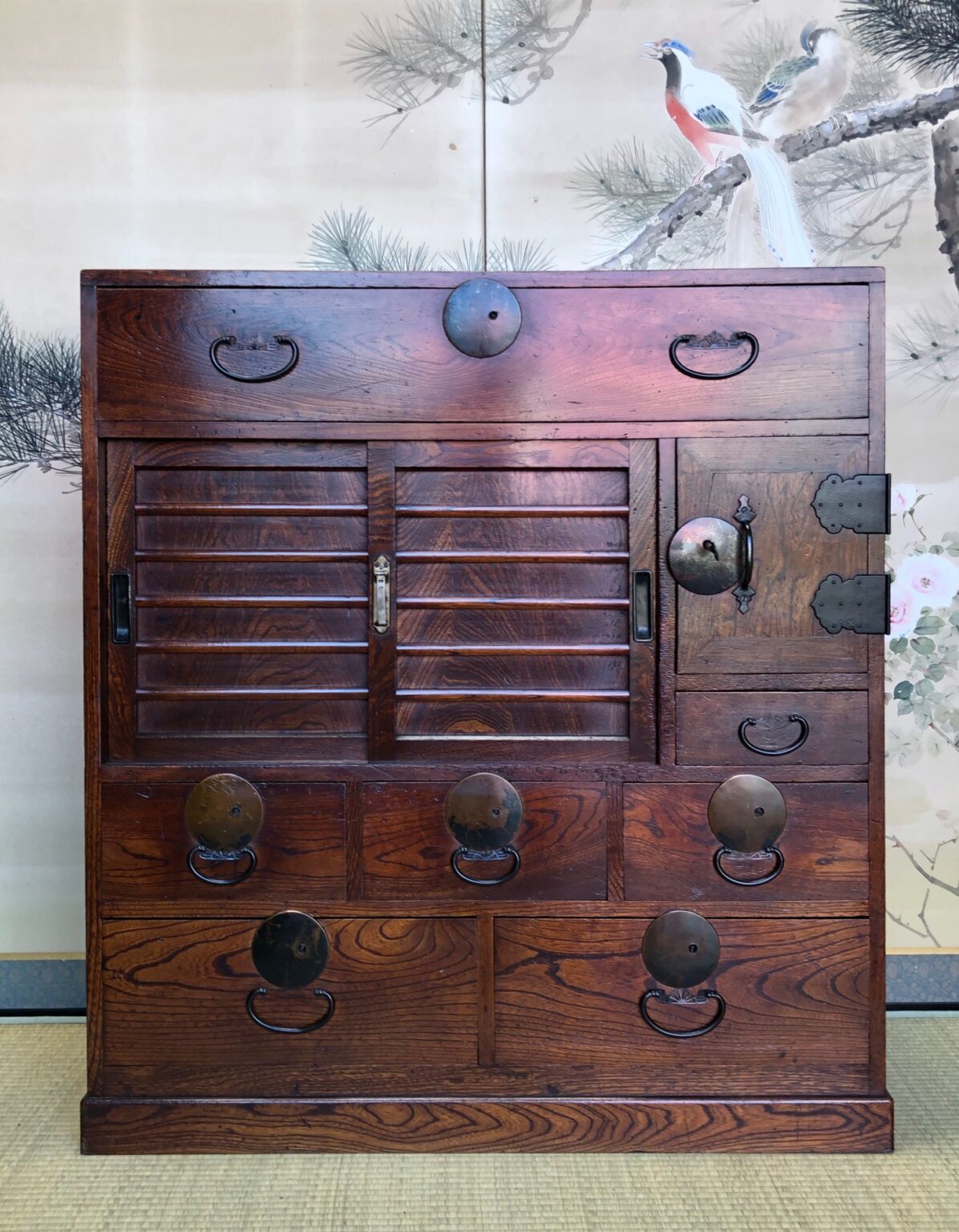
Prehistoric Shinto shrines to the kami, the gods and spirits, are found on beaches and in forests all over the island. Japanese gardens have their roots in the Japanese religion of Shinto, with its story of the creation of eight perfect islands, and of the shinchi, the lakes of the gods. They were also influenced by the rich variety of flowers and different species of trees, particularly evergreen trees, on the islands, and by the four distinct seasons in Japan, including hot, wet summers and snowy winters. Their aesthetic was influenced by the distinct characteristics of the Honshu landscape rugged volcanic peaks, narrow valleys, mountain streams with waterfalls and cascades, lakes, and beaches of small stones. Japanese gardens first appeared on the island of Honshu, the large central island of Japan. Ise Jingu, a Shinto shrine begun in the 7th century, surrounded by white gravel Today, the tradition of Japanese garden art is still popular around the world, with many eastern and western practitioners expressing themselves through the medium. Japanese merchants witnessed the gardens that were being built in China, and brought many of the Chinese gardening techniques and styles back to Japan. The idea of these unique gardens began during the Asuka period. Since the end of the 19th century, Japanese gardens have also been adapted to Western settings. By the Edo period, the Japanese garden had its own distinct appearance. Japanese gardens were developed under the influences of the Chinese gardens, but gradually Japanese garden designers began to develop their own aesthetics, based on Japanese materials and Japanese culture.

Japanese garden styles include karesansui, Japanese rock gardens or Zen gardens, which are meditation gardens where white sand replaces water roji, simple, rustic gardens with teahouses where the Japanese tea ceremony is conducted kaiyū-shiki-teien, promenade or stroll gardens, where the visitor follows a path around the garden to see carefully composed landscapes and tsubo-niwa, small courtyard gardens.

The gardens of the Emperors and nobles were designed for recreation and aesthetic pleasure, while the gardens of Buddhist temples were designed for contemplation and meditation. Japanese gardens ( 日本庭園, nihon teien) are traditional gardens that create miniature idealized landscapes, often in a highly abstract and stylized way. Saihō-ji (Kyoto), also known as the "Moss Garden", begun in 1339


 0 kommentar(er)
0 kommentar(er)
